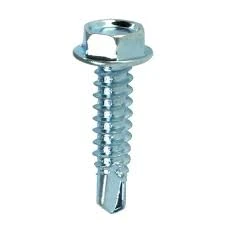double ended stud with flange
Understanding Double Ended Studs with Flange
In the world of engineering and mechanical design, fasteners play a crucial role in ensuring the integrity and functionality of structures. One such fastener that has gained prominence due to its versatility and effectiveness is the double ended stud with flange. This article will explore the characteristics, applications, and benefits of using double ended studs with flanges in various industries.
What is a Double Ended Stud with Flange?
A double ended stud with flange is a type of fastener that features threads at both ends, allowing it to be screwed into two components simultaneously. The flange, which is a flat protrusion on the middle part of the stud, provides added support and stability. This design makes it ideal for scenarios where a strong, secure joint is required between two parts, as the flange helps distribute load and reduces the risk of loosening over time.
Key Features
1. Dual Threading The primary characteristic of the double ended stud is its dual-thread design. Each end can be threaded to accommodate different sizes or types of nuts and components, providing versatility in assembly.
2. Flange Design The flange acts as a stop or anchor point for the stud, ensuring that it remains firmly in place during use. This is particularly important in applications where vibration or movement can cause standard studs to loosen.
3. Material Options Double ended studs can be manufactured from various materials, including steel, stainless steel, brass, and nylon. This variety allows for use in diverse environments, from marine applications to heavy industrial settings.
4. Finish and Coatings The surface of double ended studs can be treated with various coatings (such as zinc plating or black oxide) to enhance corrosion resistance and reduce wear, further extending the lifespan of the fastener.
Applications
Double ended studs with flanges find a wide array of applications across several industries
1. Automotive In the automotive industry, double ended studs are often used in engine assemblies, suspension systems, and chassis components. Their ability to withstand high levels of stress makes them ideal for critical fastenings.
double ended stud with flange

2. Construction In construction, these fasteners are employed to secure components in structural assemblies, masonry, and infrastructure projects. The flange design helps in achieving a stable assembly, which is essential for safety.
3. Manufacturing In manufacturing processes, double ended studs with flange can be used to assemble machinery and equipment. They facilitate quick assembly and disassembly while maintaining structural integrity under load.
4. Marine Applications Due to their durability and resistance to corrosion, these fasteners are widely used in marine environments where exposure to saltwater and humidity is common.
Benefits
The use of double ended studs with flange offers several advantages
- Enhanced Stability The flange provides a stop to prevent the stud from being pulled through the components, ensuring a stable connection that can withstand significant mechanical forces.
- Ease of Installation With threading on both ends, these fasteners can easily be inserted into various components, reducing assembly time.
- Load Distribution The wide base of the flange aids in load distribution, reducing stress on the surrounding materials and enhancing the overall longevity of the assembly.
- Versatility The ability to use different sized nuts on either side increases flexibility in design and application.
Conclusion
In conclusion, double ended studs with flanges are an essential component in numerous industries, providing strong, reliable fastening solutions. Their unique design offers important benefits that make them preferable in critical applications where safety and durability are paramount. By understanding the features and advantages of double ended studs with flanges, engineers and designers can make informed choices that enhance the performance and reliability of their assemblies. As industries continue to evolve, the importance of such versatile fasteners will undoubtedly remain a cornerstone of mechanical and structural integrity.
-
Weatherproof Plastic Expansion Anchors for OutdoorNewsJun.06,2025
-
Sustainability in the Supply Chain: Eco-Friendly TEK Screws ProductionNewsJun.06,2025
-
Load-Bearing Capacity of External Insulation FixingsNewsJun.06,2025
-
Double Head Bolts: Enhancing Efficiency in Industrial MachineryNewsJun.06,2025
-
Corrosion Resistance in Chipboard Screws: Coatings for Wholesale DurabilityNewsJun.06,2025
-
Butterfly Toggle Bolts : Enhancing Structural ResilienceNewsJun.06,2025
